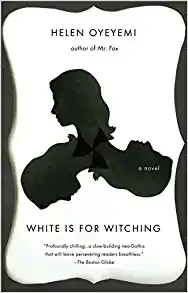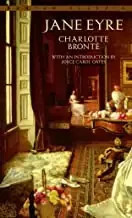11. Wide Sargasso Sea

Wide Sargasso Sea by Jean Rhys
I love this post-colonial novel, and I love it much more than Jane Eyre. The author Rhys is a white Creole who grew up in the British colonies. It is said that when he was a teenager, he was very surprised when he first read about the crazy Creole woman in Jane Eyre and wanted to restore this crazy woman one day.
What Reese wants to express is complex, but the fusion is cleverly interspersed, and the special awkward position of Creoles between people of color and British whites, the racial conflict on the island, the injustice of women in the combination of law and marriage, And the struggles of a Clio woman's life are revealed in just one short novel.
Although Jane Eyre was an independent woman who broke through the traditions of the Victorian period, Charlotte could not escape the superiority of white women as a model of elegance and holiness and constructed a Clio crazy woman from the colony such as Rochester's original match to make a comparison.
Boundless Bathing Sea completely shatters this polarized contrast, and while providing a reasonable explanation for her madness, exposes the psychological scars of the people of color in the colony.
12. The Turn of the Screw

The Turn of the Screw by Henry James
Henry James (1843-1916), a famous novelist, literary critic, and playwright, was born into a wealthy family in New York. He chose to travel and study all over Europe when he was young. The long history and profound cultural heritage of the European continent gave him a stronger sense of belonging.
This famous artist who influenced modern literature finally became a British citizen a year before his death, and then died in London, leaving his soul forever. In this heart-wrenching land.
"The Turn of the Screw" is the pioneering work of a famous psychoanalytic novel in the 20th century. It was written in 1898. After more than 100 years of circulation, it is still widely praised.
In terms of choreography and narrative skills, the suspenseful and terrifying atmosphere of the whole story is well rendered: a group of people started a night talking around the fireplace, which has a sense of sight of Japanese horror legends, and this group people listened to the original story in a dark night.
There are some weird stories that push this creepy feeling to the extreme. In a situation similar to a picture-in-picture, even readers outside the book are not substituted into their own imaginations: the weirdness in the story It won't happen around me, is the reality I'm in the real reality, and whether there are other audiences watching me outside the environment I'm in, admiring the "Truman World" I staged? "?
Another aspect of the success of the work lies in the existence of two different interpretations of the governess’s self-reported experiences: one is that what the female teacher said was true, and the two orphans she cared for had far more mature and even more mature children than children of the same age.
Slightly evil thoughts and this mansion is also shrouded in the shadow of the ghosts of dead servants, the most terrifying thing is that in such an environment, only the female teacher can see the "truth" behind it, and others may not see or For some reason he was silent.
This state of "sober alone" makes the client face the most terrifying situation, no one understands her, and no one saves her. Many successful horror movies have borrowed this similar setting, such as "The Orphan's Resentment", "Omnipotent" The Keys" and so on,
the stories mixed with the existence of supernatural phenomena have a surreal feeling in themselves, and the huge conflict between the incredibly realistic existence and people's common sense cognition aggravates the unique shocking perception.
The other is a psychological interpretation that is very similar to Freud's theory, that is, all the self-reports of the female governess are her subjective imaginations and the projections of her psychological desires in reality.
German theories are similar rather than directly identified as being equal because the book "The Turn of the Screw" was written earlier than Freud's theory, but Henry James, who also studied philosophy and psychology, should also The theory proposed by Lloyd later is quite agreeable.
This may also be a coincidence that under the historical conditions of the same period, the heroes of the great people see the same thing.
13. White is for Witching

White is for Witching by Helen Oyeyemi
There’s something strange about the Silver family house in the closed-off town of Dover, England. Grand and cavernous with hidden passages and buried secrets, it’s been home to four generations of Silver women—Anna, Jennifer, Lily, and now Miranda, who has lived in the house with her twin brother, Eliot, ever since their father converted it to a bed-and-breakfast.
The Silver women have always had a strong connection, a pullover one another that reaches across time and space, and when Lily, Miranda’s mother, passes away suddenly while on a trip abroad, Miranda begins suffering strange ailments.
An eating disorder starves her. She begins hearing voices. When she brings a friend home, Dover’s hostility toward outsiders physically manifests within the four walls of the Silver House, and the lives of everyone inside are irrevocably changed.
At once an unforgettable mystery and a meditation on race, nationality, and family legacies, White is for Witching is a boldly original, terrifying, and elegant novel by a prodigious talent.
It's not so much a horror as a modern gothic novel, With women trapped in a house like The Shining, the border between the supernatural and reality is blurred, xenophobia, race, snow-white, eating disorder, lesbian desires, haunted house, etc.
Thematic divisions such as Ore, Eliot, and Silver House are scattered in multiple perspectives. At the end of the reading, I felt that some lines of the author were not recovered, but I was still bewitched by the creepiness and strangeness of Oyeyemi's pen.
14. The Thirteenth Tale

The Thirteenth Tale: A Novel by Diane Setterfield
"Once upon a time, there was a haunted house..."
"Once there was a library..."
"Once there was a twin..."
When a successful novelist changes three openings in a row to keep her listeners, it is indeed an Unusual scene. Vida Winter is an enigmatic best-selling author, with countless versions of her past circulating in the world's media. There was as much curiosity about her as there was for the book she didn't finish.
It was a bizarre collection of short stories, originally titled Thirteen Stories of Change and Despair, which, paradoxically, only had twelve stories, so it was quickly recalled by the publisher after the first edition was released, and the name was changed for the second edition.
For A Story of Change and Despair. However, Miss Winter's loyal readers are still accustomed to calling this book "Thirteen Stories", and the unwritten story has become the itchiest knot in every Winter fan's heart.
The person Winter is trying to save with stories in her far-flung villa is an ordinary and unusual girl. Margaret grew up in her own second-hand bookstore, surrounded by books, a loving father, and an indifferent mother. Faced with the invitation to write a biography of Winter, someone else would probably rush to it, but Matrite hesitated that everything might just be a "story".
After all, there are countless versions of Winter in this world, and each version is produced by Winter. She was curious but did not want to be a good storyteller in vain, so she put forward a condition: she wanted to ask Winter three things, these three things must have a public record, and she would verify these things while listening to Winter's memoirs authenticity, and then decide whether to accept the commission.
At this point, a vast narrative unfolded between the two. On one side is the terminally ill Winter, who still has the beauty of a stone statue in her old age, she is cold and severe, her palms have strange burns, and the threads of stories are buried in her mind; on the other side is the young and susceptible Margery.
In the process of listening, she became obsessed with the whole incident and tried to find her own thread in it. As Winter once said, all stories have a beginning, middle, and end, and the key is to get them in the right order.
Winter's story is told "in the right order," and attentive listeners like Margaret fail to notice an important lack. She got to the end of the story first but didn't guess the beginning.
As the story progresses, Winter's body declines, and his career is delayed by mental powers and drugs alone. Dr. Clifton is another outsider in and out of the mansion, and under the cover of professionalism, he has only revealed his true heart twice.
One time, he asked Margaret about the truth of the "Thirteenth Story", but of course, he didn't get an answer; another time, he gave Margaret a unique prescription for insomnia and nightmares: "Arthur Conan? Doyle. The Detectives of Sherlock Holmes. Read ten pages twice a day until you're done."
There were two girls who had read Jane Eyre time and time again, young Winter— She wasn't even that name then, and Margaret. I am used to finding comfort in stories, perhaps because of the coldness of life itself. After arriving, one of them made a living by telling stories, and the other remembered the bits and pieces that existed in the world in the pile of old papers.
After a long time and their own pains, they met in the old house in winter, all the past is unfolding in front of them, all they need is a sensitive and clear heart enough to sort out the middle. How many generations of grievances are right and wrong, let's put the missing thirteenth story back to the past it belongs to.
Then, you can close the book and learn to remember, bury, and forgive. Let the story of the story be the story and the life of the life to be the life. After all, life is not as simple as opening, middle, and ending.
15. Glass Town

Glass Town: The Imaginary World of the Brontës by Isabel Greenberg
A graphic novel about the Brontë siblings, and the strange and marvelous imaginary worlds they invented during their childhood
Glass Town is an original graphic novel by Isabel Greenberg that encompasses the eccentric childhoods of the four Brontë children—Charlotte, Branwell, Emily, and Anne. The story begins in 1825, with the deaths of Maria and Elizabeth, the eldest siblings.
It is in response to this loss that the four remaining Bront. children set pen to paper and created the fictional world that became known as Glass Town. This world and its cast of characters would come to be the Brontës’ escape from the realities of their lives. Within Glass Town, the siblings experienced love, friendship, war, triumph, and heartbreak.
Through a combination of quotes from the stories originally penned by the Brontës, biographical information about them, and Greenberg's vivid comic book illustrations, readers will find themselves enraptured by this fascinating imaginary world.
Are you a Jane Austen fan? Then make sure to check out our list of books like Pride and Prejudice!





















